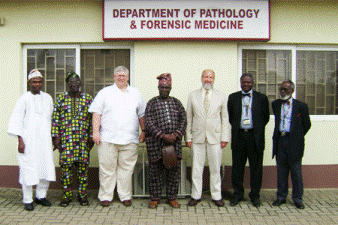Natural Resources, School of

Karl Reinhard Publications
Document Type
Article
Date of this Version
10-2016
Citation
Korean J Parasitol Vol. 54, No. 5: 605-616, October 2016
https://doi.org/10.3347/kjp.2016.54.5.605
Abstract
In the present study, quids from La Cueva de los Muertos Chiquitos (CMC) were subjected to ELISA tests for 2 protozoan parasites, Toxoplasma gondii (n=45) and Trypanosoma cruzi (n=43). The people who occupied CMC, the Loma San Gabriel, lived throughout much of present-day Durango and Zacatecas in Mexico. The known pathoecology of these people puts them into at-risk categories for the transmission of T. gondii and T. cruzi. Human antibodies created in response to these 2 parasites can be detected in modern saliva using ELISA kits intended for use with human serum. For these reasons, quids were reconstituted and subjected to ELISA testing. All test wells yielded negative results. These results could be a factor of improper methods because there is no precedence for this work in the existing literature. The results could equally be a simple matter of parasite absence among those people who occupied CMC. A final consideration is the taphonomy of human antibodies and whether or not ELISA is a sufficient method for recovering antibodies from archaeological contexts. An additional ELISA test targeting secretory IgA (sIgA) was conducted to further examine the failure to detect parasite-induced antibodies from quids. Herein, the methods used for quid preparation and ELISA procedures are described so that they can be further developed by future researchers. The results are discussed in light of the potential future of quid analysis.
Included in
Archaeological Anthropology Commons, Ecology and Evolutionary Biology Commons, Environmental Public Health Commons, Other Public Health Commons, Parasitology Commons


Comments
© 2016, Korean Society for Parasitology and Tropical Medicine This is an Open Access article distributed under the terms of the Creative Commons Attribution Non-Commercial License